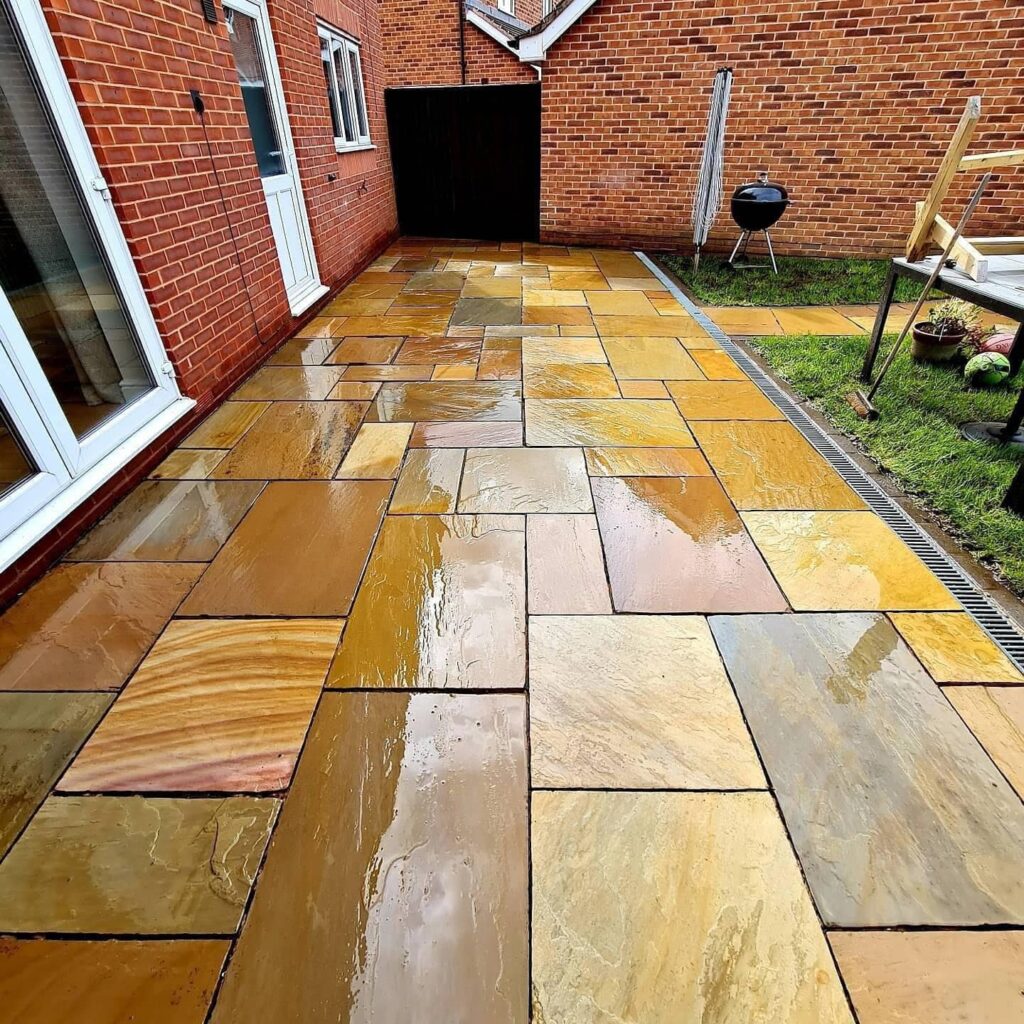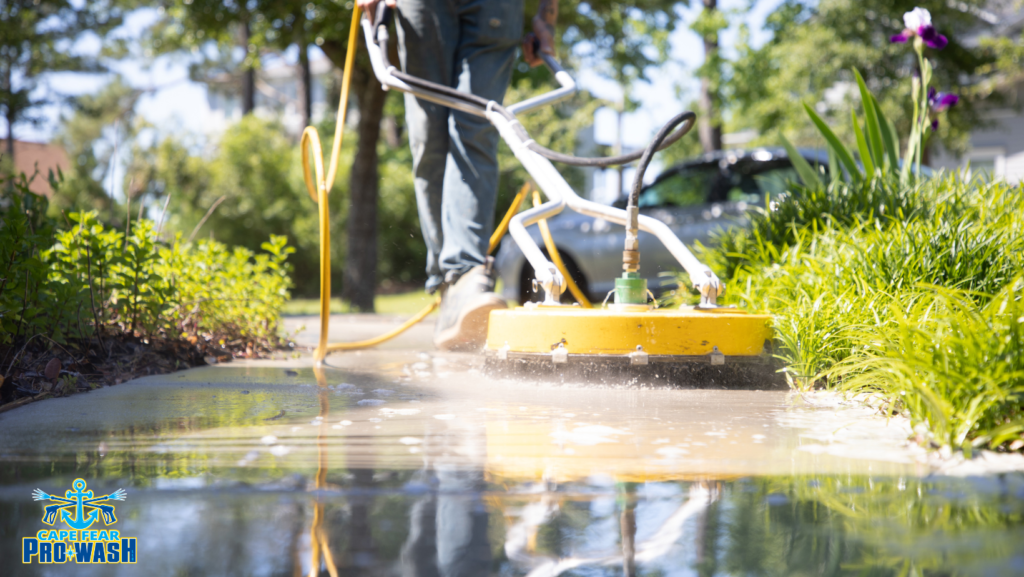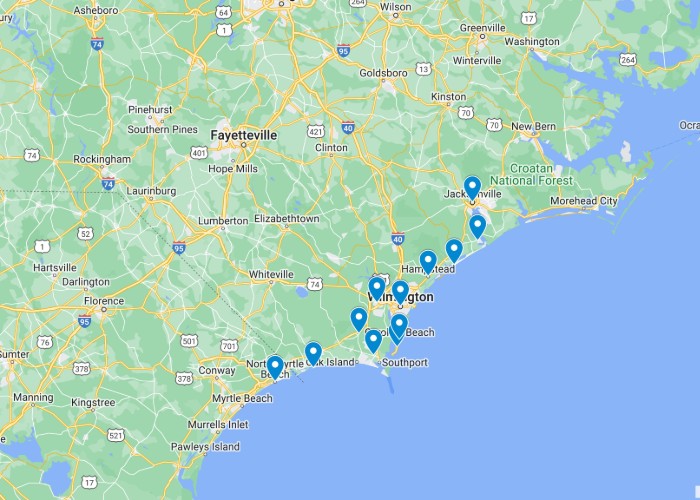Get Ready for Spring Cleaning with This Guide to Power Washing Your Home
Spring is the perfect time to give your home a deep clean and get rid of all the built-up dirt and grime from the winter months. One of the most efficient ways to do this is by power washing your home. Power washing, also known as pressure washing, uses high-pressure water spray to remove dirt, mildew, and other stains from various surfaces. It can be used on a variety of surfaces, including brick, concrete, wood, and more.
In this guide, we will discuss the benefits of power washing your home, what equipment you need, and how to safely and effectively power wash different areas of your home.
Understanding Power Washing
Power washing is much more than just blasting water at your home; it is a technique that requires an understanding of the types of surfaces and the level of pressure required to clean them effectively without causing damage. It involves specialized equipment that can control the water pressure, allowing it to strip away stubborn stains and debris while preserving the integrity of your home’s exterior surface. Knowing when and where to use pressure washing is crucial for achieving the best results, as misuse can lead to damaged siding, dislodged bricks, or ruined paint jobs. This process not only improves the look of your home but also protects it by preventing the build-up of harmful substances that can cause long-term damage.

Preparing Your Home for Power Washing
Before you begin the power washing process, it’s essential to prepare your home to ensure a safe and effective clean. Start by securing or removing any loose objects from the area being washed, such as planters, outdoor furniture, and decorations. Cover plants, light fixtures, and electrical outlets with plastic sheeting to protect them from high-pressure water and cleaning solutions. Close all windows and doors tightly to prevent water from entering your home. Additionally, clear away any debris from the surfaces to be cleaned. If you’re using a chemical cleaner with the power washer, choose an eco-friendly option and take the necessary precautions to safeguard your landscaping and prevent any chemical runoff. Proper preparation is the key to a successful power washing that not only transforms the look of your home but also maintains its structural integrity.
Choosing the Right Power Washing Equipment
When it comes to power washing your home, selecting the appropriate equipment is pivotal to an effective and safe cleaning process. Pressure washers come in various sizes and pressure outputs, typically measured in pounds per square inch (PSI). For most home applications, a mid-range power washer with 2000 to 3000 PSI will suffice to clean without causing damage. It’s also important to look for a washer that has adjustable pressure settings and interchangeable nozzles to handle different cleaning tasks. Electric power washers are suitable for light-duty work and are quieter and more environmentally friendly, while gas-powered models offer stronger pressure for more challenging jobs. Safety features such as auto-shutoff, durable hoses, and no-slip grips are additional considerations. Always ensure you choose a power washer that is rated for the type of cleaning you need, and don’t forget to include protective gear, like goggles and gloves, to safeguard yourself during the process.
DIY Power Washing Tips
Power washing your home is a task that can be accomplished by most do-it-yourselfers, but it’s important to approach it with caution and knowledge. Here are some tips to ensure you power wash your home effectively and safely:
- Test the Pressure: Before cleaning your home’s surfaces, test the water pressure on a small, inconspicuous area. Adjust the nozzle and pressure to find the right setting that cleans effectively without damaging the surface.
- Use a Sweeping Motion: Move the spray in a controlled, sweeping motion, starting from the top and working your way down. This helps ensure an even cleaning and prevents streaks.
- Maintain Distance: Keep the nozzle about a foot away from the surface and adjust based on the material you’re cleaning. Too close, and you risk damage; too far, and you might not clean effectively.
- Choose the Right Nozzle: The nozzles control the pressure and spread of the water spray. A narrower angle provides higher pressure, suitable for tough stains, while a wider angle offers lower pressure, ideal for delicate surfaces.
- Clean in Sections: Tackle one small area at a time. This helps concentrate your cleaning efforts and ensures that you don’t miss any spots.
- Avoid Direct Angles on Windows and Doors: Direct high-pressure water can break seals and force water inside your home. Angle the nozzle so that the water does not direct into window panes or door gaps.
- Exercise Caution on Ladders: If you need to use a ladder, make sure it is securely positioned. It’s best to have someone hold the ladder while you work to prevent accidents.
Hiring Professionals for Power Washing
While DIY power washing can be cost-effective for some homeowners, hiring professionals can offer several distinct advantages. Professional power washing services have experience with various types of surfaces and can assess the best approach to take without causing damage. They are equipped with high-grade equipment and possess the knowledge to select the right pressure settings and cleaning solutions tailored to your home’s specific needs. Additionally, they are trained to handle and mitigate any risks associated with high-pressure water systems, including operating on elevated surfaces and around vulnerable areas like windows and landscaping. When choosing a professional power washing service, look for companies with good reviews, proper licensing, and insurance. Remember, while the upfront cost might be higher when hiring professionals, the benefits of expertise, efficiency, and peace of mind can make it a worthwhile investment.

Maintaining Your Home Post-Power Washing
After a thorough power washing, maintaining the cleanliness and integrity of your home’s exterior is crucial for extending the time between washes and preserving your investment. Regular inspections for accumulated dirt or mildew, especially in shaded areas that remain damp, can help catch problems early. Implementing a gentle cleaning schedule using mild soap and a soft brush can keep surfaces in good condition without the need for frequent high-pressure washing. Additionally, addressing any repair issues promptly, such as sealing cracks or repainting chipped areas, prevents water infiltration and further damage. By being proactive about home maintenance, you can help ensure your residence stays as fresh and inviting as it looks immediately after power washing.
In conclusion, power washing is a highly effective method for rejuvenating the exterior of your home, capable of removing years of dirt, grime, and environmental buildup with immediate results. Whether you choose the DIY route or opt for professional services, understanding the proper techniques and safety measures is imperative. By selecting appropriate equipment, employing strategic cleaning methods, and committing to ongoing maintenance, you will not only enhance your home’s curb appeal but also contribute to its longevity. With diligence and care, your power washing efforts will go a long way in preserving the beauty and value of your cherished dwelling.
Cape Fear Pro Wash, LLC
https://www.google.com/maps?cid=3105027869549498974
229-B Transfer Station Rd, Hampstead, NC 28443
(910) 418-1650
https://capefearprowash.com/





